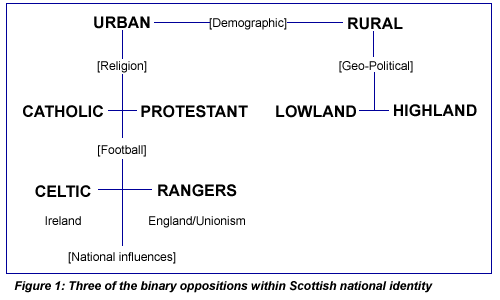
| A Conflict of identities: the pluralism of Scottish national identity in the contemporary global era. | ||
| < Prev Page | Dissertation Index | Next Page > |
|
|||||
| < Prev Page | Next Page > | ||||
| References: (see the full references & endnotes and bibliography) 19. S. Hall, 1992, The Question of Cultural Identity, in S. Hall, D. Held & T. McGrew (eds), Modernity and its Futures, Polity, Cambridge.
|
|||||
| < Prev Page | Next Page > | ||||
© Paul Allison (unless otherwise stated). All rights reserved. If reproducing any original text in part (i.e. as a quote), please credit to this website. Please do not reproduce this work in whole, or in substantial parts, without prior permission. Thanks. |
|||||
| Section: [ME] [RANTS] [HOW I GOT HERE] [LIKES] [BEING SCOTTISH] [POETRY] |
Site: [HOME] [FOOTBALL] [TRAVEL] [INTERNET] [ME] [PHOTOS] [FAVOURITES] [CONTACT]
